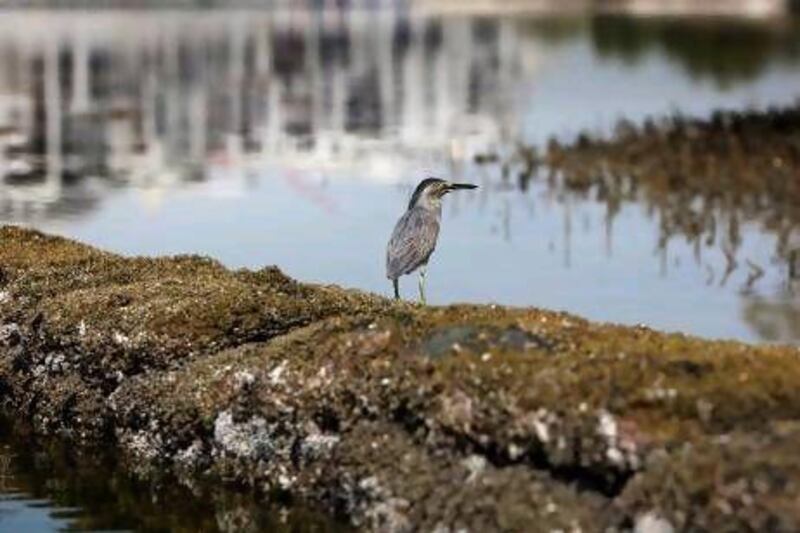Down a small dirt track, just off the main road, is where you will find Abu Dhabi's best kept secret – the wild mangroves.
Home to fish, herons, blue swimmer crabs and, on occasion, turtles, they are teeming with life.
The mangroves are also one of the most interesting parts in the city where people can relax with nature, even during the hot summer months.
"On some trips we have even seen dolphins and stingrays," said 28-year-old Dennis Perez, a tour guide with local adventures company Noukhada.
"There are also a family of red foxes that live on one of the islands, but they recently had four cubs and we haven't seen them."
Noukhada offers daily kayaking trips through the protected area, the tours have continued throughout the summer but at a slower pace than the rest of the year, said Mr Perez.
"In the morning, the earliest we do is 6am. We'll have a break at midday because of the heat, starting up again about 3 or 4pm."
During the cooler months, the tours run throughout the day, five days a week.
At just under two hours long, and with the option of going for a quick dip, the tours offer a welcome respite from the heat, said Joe Fletcher, 32, who was visiting the UAE on a business trip.
"I have kayaked before, but not here. I did not think there was that much natural beauty. Before I came my impression was that there was not much to do."
Giving people the opportunity to see the mangroves up close offers a different side to the city visitors may not be fully aware of, said the American.
"Many people [who go on the tours] see us as they drive down Salam Street," said Mr Perez. "They pull in, they ask a tonne of questions and, sure enough, we see them over the next month, which is awesome."
An early morning kayak tour will take you away from the busy main road and construction noises and envelope you in silence – aside from the occasional bird call.
The water, shallow and clear, is thriving with life. Shoals of tiny fish dart under the kayaks while blue swimmer crabs grab at the oars if they come too close. The sand banks are home to black crabs that share the small living space with hundreds of thousands of trees.
Both plant and animal help one another, said Mr Perez.
"Underneath the water, the crabs make tunnels under the roots. Air and water get trapped inside, keeping the roots cool. In return, the crabs eat the leaves, which are too salty for many other creatures."
But while things might look tranquil, the nearby building and increased traffic through the water by power boats has led to the sand banks eroding at a faster pace than normal. It has also driven out some of the wildlife, said Mr Perez, who has seen the number of turtles dwindle in the past nine months.
"They [the boats] are a big threat. The plants have a natural barrier against tidal erosion, but fast boats will totally destroy the soil the trees root in. Unfortunately, there is no speed limit."
In 2008, the Urban Planning Council, the body in charge of overseeing all development in the city, and the Environment Agency Abu Dhabi enforced tighter restrictions on construction companies operating in the surrounding areas.
These restrictions aided in saving from destruction more than 60,000 square metres of mangroves this month, after the agency prevented three Abu Dhabi-based companies from dredging areas around Al Reem Island.
In 2010 the planning council planted 250,000 Avicennia marina saplings – the black or grey mangrove that grow in the UAE – to limit the damage caused by building.
Although unable to say what the future holds for the mangroves, the team at Noukhada, which offers eco-tours and cleans up any litter left by others or blown from building sites, will continue to visit the Abu Dhabi natural beauty spot come rain or shine.
For more in this series, click here.






